2022
NASA Civil Servant Workforce, FY 2013-2023
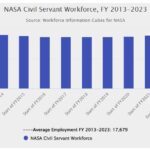
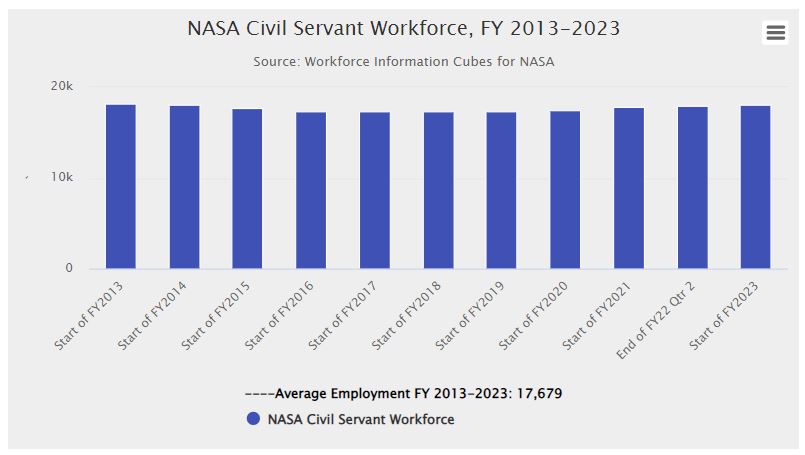
In 2022, NASA was named the best place to work in the federal government among large agencies for the 10th year in a row. NASA attributed this “decade of excellence” to the agency’s continuing dedication to supporting and strengthening its workforce.
Representation of Women and Minorities in Selected Industries and Aerospace Companies
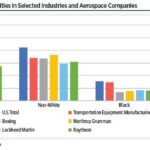
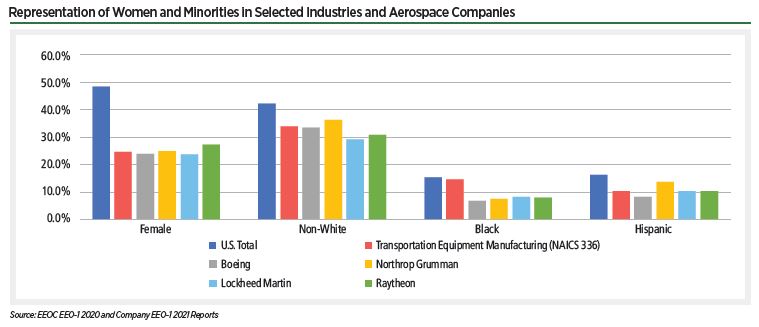
While all U.S. space companies with at least 100 employees (or at least 50 employees if they do work for the government) are required to collect information on diversity and report it to the U.S. government, most do not make this data available to the public. However, four of the largest aerospace contractors — Lockheed Martin, Northrop Grumman, Boeing, and Raytheon — make their EEO-1 reports public.
U.S. Space Industry Employment and U.S. Total Employment Relative to 2011
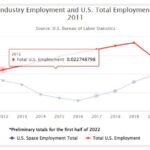
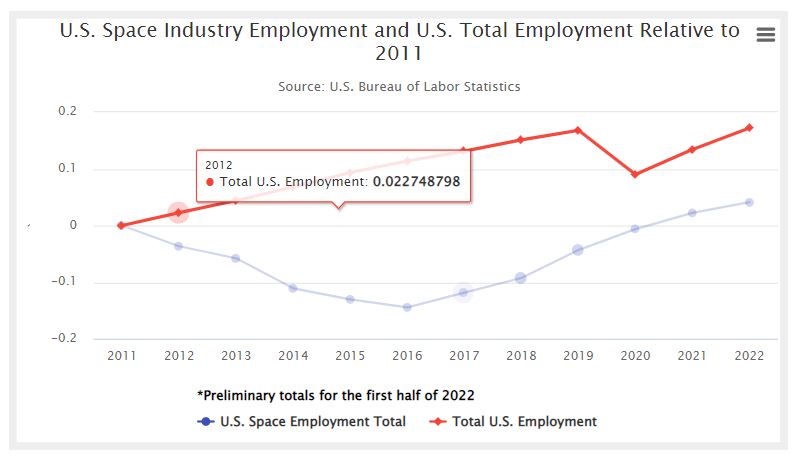
Employment at U.S. private sector space companies grew nearly 2% from 2021 to 2022, reaching 155,973 people in five employment classifications, based on preliminary estimates from the U.S. Bureau of Labor Statistics. This continues a consistent pattern of growth since 2016.
U.S. Private Sector Space Industry Employment, 2012-2022
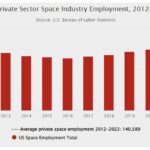
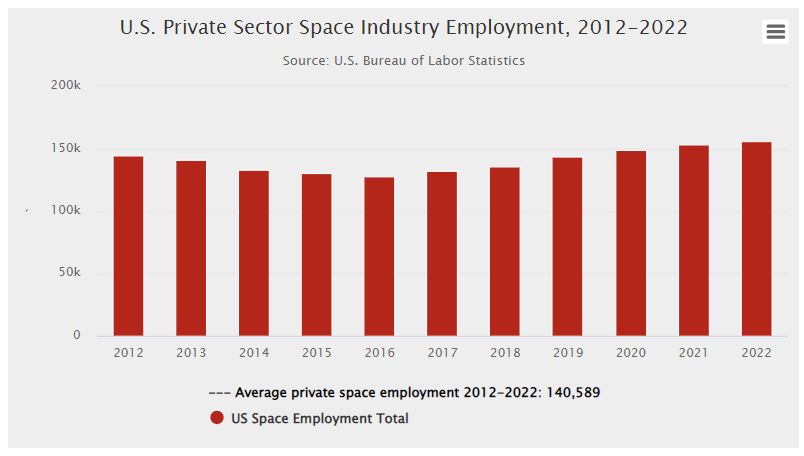
The private space sector has grown more than 18% over the past five years and proved to be resilient to the negative effects on total U.S. employment associated with the COVID-19 pandemic.
NASA’s Economic Benefits Span 50 States, Generating Innovation, Growth
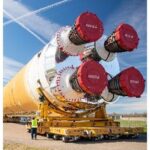
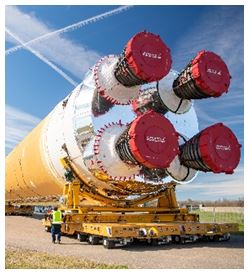
In 2021,NASA generated more than $71 billion in economic output, supported more than 330,000 jobs, and delivered significant tax revenue for federal, state, and local governments, the agency’s latest Economic Impact Report shows.
Representation of Women and Minorities among Senior Officials and Management Compared to Representation in U.S. Workforce
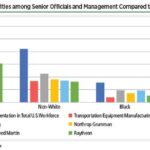
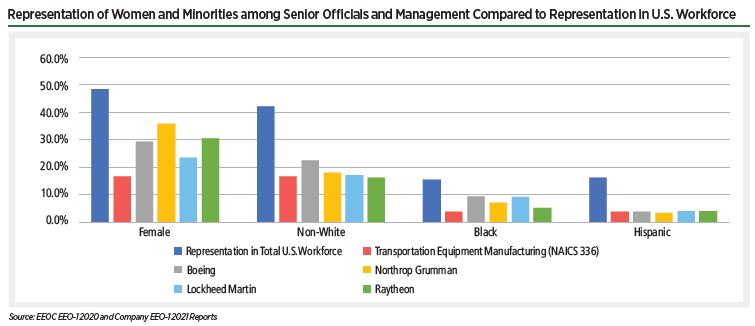
Four of the largest aerospace contractors — Lockheed Martin, Northrop Grumman, Boeing, and Raytheon — make their EEO-1 reports public. Within these companies, the proportion of females and minorities is similar to that seen in the transportation manufacturing sector overall. However, they have significantly fewer Black employees than that sector, on average.
Commercial Space Stations Steadily Make Progress, Begin Preliminary Tests


As the International Space Station (ISS) nears the end of its life and the U.S. celebrates the 50th anniversary of Skylab, its first space station, the commercial sector is hard at work designing the next generation of space stations in low Earth orbit (LEO).
Launch Attempts by Top Operators, 2000-2022
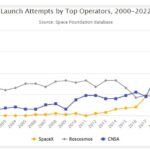
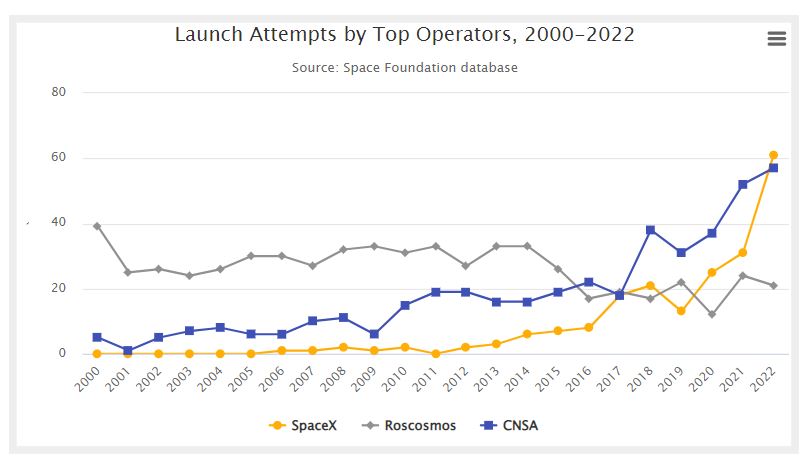
Two of the top three launch operators — CNSA and SpaceX — have contributed to overall launch activity growth by exponentially increasing their pace, while the third — Roscosmos — decreased its annual launches by 42% from 2000 to 2022.
U.S. Aerospace Engineers by Age
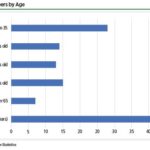
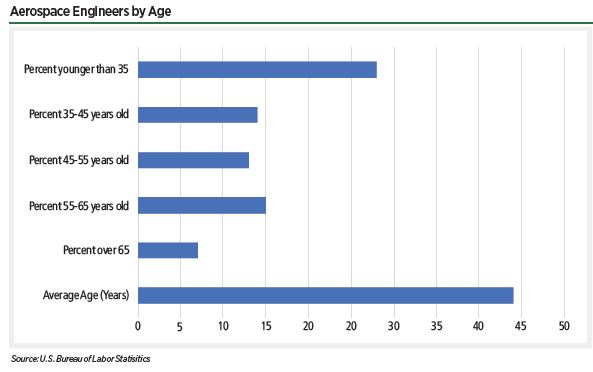
In addition to the current openings, the U.S. Bureau of Labor Statistics expects the need for aerospace engineers possessing at least a bachelor’s degree to grow by 6% through 2031.
Study Shows Steady Decline in U.S. Students Studying Engineering, Science


U.S. Space firms battling for workers in an increasingly tight employment market could face a bigger fight after five years of declining enrollment for engineering and science majors at American colleges and universities.